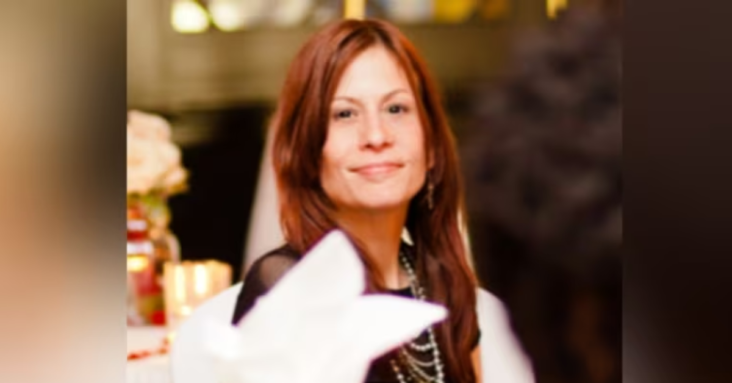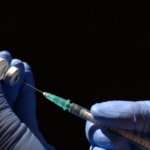
Danielle Stephanie Warriner sits alone in a Toronto hospital lobby, wearing little more than a pale blue medical gown. Moments later, she’s wheeled away by guards, her slight frame slumped in a wheelchair, her legs dangling from the edge.
What happens in between isn’t captured on video.
Instead, a security camera was purposely turned away as guards approached the 43-year-old, pushed her against a wall and restrained her on the ground before she lost consciousness — never to regain it.
Those scenes are part of the evidence that would have been heard at the trial of the guards charged in Warriner’s death at Toronto General Hospital in May 2020.
Now, that won’t happen. In a surprise move by an Ontario judge on Nov. 22, the case against the guards has been quashed and the trial that was supposed to begin this May struck from the docket.
For months, Warriner’s family has waited for their day in court. Instead, they say they’re now left blindsided.
“My first reaction was shock, horror,” Warriner’s sister, Denise, told CBC News. “There’s been no accountability and there’s a gaping hole in my heart.”
“She was a very tiny woman who was clearly unwell, sitting, dealing with respiratory distress and they wrangled her to her death. There was no lawful reason for them to have ever put hands on her,” she said she believes.
“This ought to have been put to a trial.”

Amanda Rojas-Silva, 42, and Shane Hutley, 35, had been charged with manslaughter and criminal negligence in Warriner’s death — charges they denied, saying they used only the force necessary to gain a hold of her.
Now, those charges have been dropped after a judge concluded there wasn’t enough evidence to take the case to trial — a decision CBC News has learned the Crown won’t appeal.
That’s despite the available video footage, two security staff who testified the accused placed weight on her upper body while she was held chest down, a forensic pathologist who testified Warriner would still be alive had she not been restrained that day — and revelations one of the guards admitted he falsely claimed Warriner threw the first punch.
Until now, much of the evidence in Warriner’s death has been covered by a publication ban. With the case quashed, CBC News can now report on the details that have never been made public and reveal the footage a jury will never see.
uard, Hutley, walks into view from the right and also begins putting on a gown. One more guard walks into view from the right and also dons PPE.
By this time, Warriner is seen on her feet and appears to briefly raise her right arm before Rojas-Silva takes her to a nearby wall, with Hutley approaching from behind.
Security guard who turned away camera ‘panicked’
The camera then pans away — meaning what happens next isn’t captured on video.
At a preliminary hearing, the guard who turned the camera testified he did so because he “panicked” and “got really anxious.”
Court heard that guard was allowed to keep his job.
Asked about that decision, and whether Rojas-Silva and Hutley would be also be allowed to keep their jobs with the charges against them now dropped, University Health Network spokesperson Gillian Howard told CBC News, “UHN will not comment on a court’s decision, nor do we comment on individual hiring decisions, or employee discipline.”
By about 6:41 a.m., the guards are seen wheeling Warriner down the hall, her body slumped and legs splayed, not moving. They turn left into an elevator bay and disappear from view.
Court heard it was there that Rojas-Silva noticed something was wrong and started checking for a pulse. The guards removed Warriner’s handcuffs as Rojas-Silva called a “Code Blue” and began doing chest compressions.
A coroner’s report would conclude Warriner died from a brain injury resulting from a lack of oxygen “due to restraint asphyxia following struggle and exertion,” with her underlying lung disease a possible factor.
“But for her interaction with the Applicants, Ms. Warriner would likely be alive today,” the forensic pathologist testified at the preliminary hearing, according to the Crown.
Lawyers for the accused argued the forensic pathologist lacked the expertise to come to that conclusion.
Still, in quashing the case, Superior Court Justice Sean Dunphy noted, “There is evidence that death could have been the culmination of the factors he described.”
Guards claimed force used as ‘last resort’
In the absence of footage from the moments on the ground, two eye witnesses testified the accused held the 125-pound woman down by her upper body despite their training warning of the risks of doing so.
“There is a risk of positional restraint asphyxia due to the person’s body weight pressing down on their chest and the fact that the patient cannot support herself when her hands are handcuffed behind her back,” the Crown noted, citing testimony from the guards’ supervisor.
According to UHN policy documents seen at the preliminary hearing, guards can use force only when all other interventions fail. As well, they’re required to use only the amount of force necessary to control a situation and only in “extreme emergencies” such as in self-defence, defence of others or under the direction of medical staff.
As they grappled on the ground, two witnesses testified Warriner was flailing her arms and legs, shouting as the two guards, Rojas-Silva and Hutley, took control of her limbs. A third guard applied handcuffs.
It’s not common for a judge to screen out a case before it’s set for trial.– Frank Addario, criminal lawyer
In a document filed by her lawyer, Rojas-Silva claims she took Warriner to the wall “as a last resort, after extensive efforts to verbally de-escalate an aggressive patient.”
Her supervisor testified he felt her actions were wrong. Pointing in Warriner’s face and standing in her personal space, for example, would have been “triggering,” the supervisor said, adding video of the incident is now shown in hospital training.
But as for whether the guards used more force than necessary to gain a hold of Warriner, the judge concluded on Nov. 22 “there is no evidence that either accused applied any weight to the upper body … beyond that associated with gaining control of and holding her hands or arms while handcuffs were being applied.”
Guard ‘admitted he had not been truthful’: Crown
In the aftermath of the incident, both guards claimed Warriner repeatedly assaulted Rojas-Silva before she went hands on.
But during an internal investigation by the hospital, court heard Hutley later admitted that didn’t happen.
“Mr. Hutley went as far as to claim that Ms. Warriner delivered several overhand and underhand punches to Ms. Rojas-Silva’s face and was kicking her feet,” says a court document by the Crown.
Hospital officials then confronted Hutley with the footage of the incident, playing it for him multiple times.
“Later on, Mr. Hutley began sobbing and admitted he had not been truthful in the report, saying ‘I’m sorry. I would have never said the things I said in there if I knew there was a video,'” the document says.
To see a judge decide to quash a case in this way is rare, said Toronto criminal lawyer Frank Addario, who isn’t associated with the case.

“It’s not common for a judge to screen out a case before it’s set for trial,” Addario said. “The system is set up so after a preliminary inquiry, the cases are generally set on to trial because the bar to get a case sent on to trial is very low.”
“In the rare case where the bar is not exceeded with the evidence, the judge’s obligation is to screen it out.”
In a statement to CBC News, the Ministry of the Attorney General confirmed the Crown won’t appeal to have the case revived, but wouldn’t comment on why.
“Decisions by the Crown to appeal are made in accordance with the Crown Prosecution Manual,” said ministry spokesperson Maher Abdurahman. “After carefully considering the matter in accordance with this policy, the Crown decided not to appeal. The ministry has no further comment.”
‘It haunts me’
That a case where guards facing trial for the death of her loved one could suddenly evaporate is “egregious,” said Warriner’s sister, Denise.
“It appears anyone who is anointed with any use of powers, use of authority… has a licence to kill,” she said.

With the path to a criminal trial now closed, she says she’s not ruling out other legal options.
It’s a fight she says has consumed her, but one she feels compelled to continue not only for her sister, but for others who are marginalized and vulnerable as well. All the while, she says, the memories of her sister with her family at the dinner table are interrupted by those of her final conscious moments with the guards alone.
“Her life was extinguished… It haunts me.”



